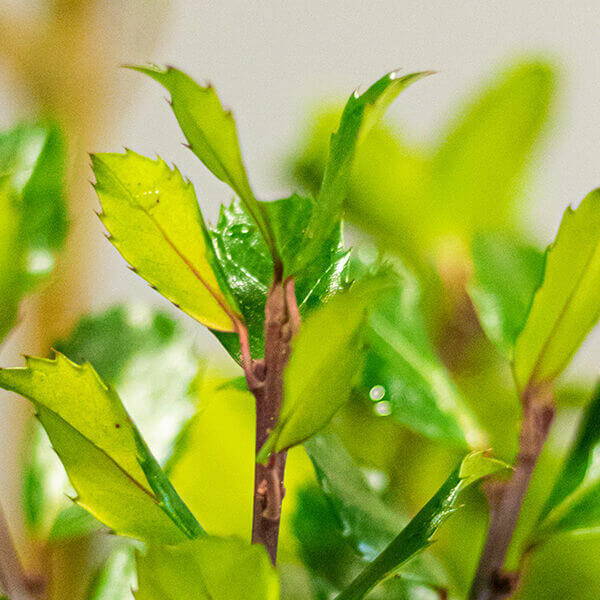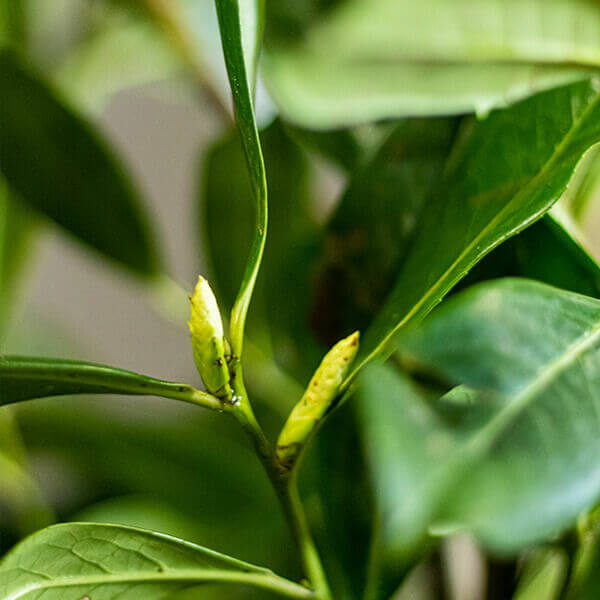Hedging Plants For Autumn Color
Hedging Plants For Autumn Color
Blog Article
Best Hedging Plants For Cool Climates
Boost your garden's allure with lush hedge ranges such as Yew (Taxus), Thuja, Laurel, Photinia, and Bamboo, commemorated for their structural stability and environmental advantages.
Yew and Thuja offer evergreen coverage and winter season strength, while Laurel provides quick growth and broad, fragrant leaves.
Photinia includes seasonal charm with its dynamic red foliage, and Bamboo provides a low-maintenance, tranquil ambiance.
These hedges improve air quality, lower noise, and create tranquil, personal areas.
Proper planting, spacing, and maintenance guarantee energetic development and ecological consistency.
Check out how these lush varieties can elevate your garden's charm and wellness.
Secret Takeaways
Transform Your Garden With Lush Hedge Varieties
- Select Yew for its dense, evergreen development and unparalleled longevity.
- Select Laurel for its quick development and broad leaves, ensuring quick privacy.
- Select Photinia for its dynamic seasonal foliage, which turns a striking dark red.
- Make use of Bamboo for a low-maintenance, winter-hardy hedge with aesthetic appeal.
- Space plants 2-3 per meter and prune routinely for ideal development and health.
Popular Hedge Plants
When changing a garden with lavish hedge ranges, it's necessary to consider popular hedge plants such as Yew, Thuja, Laurel, and Photinia due to their unique characteristics and benefits.
Yew (Taxus) is highly esteemed for its longevity and dense, green growth, making it a prime choice for enduring landscapes.
Thuja is noted for its evergreen foliage and robust winter season strength.
Photinia includes seasonal vibrancy with red leaves that darken with time, developing vibrant visual appeal.
Laurel uses quick development and aromatic, broad leaves, suitable for fast personal privacy.
In Addition, Bamboo is an excellent choice for ambiance, offering a low-maintenance, winter-hardy alternative that improves the garden's visual with its stylish, swaying walking sticks.
These selections deal with a range of horticultural needs and choices.
Advantages of Garden Hedges
Garden hedges provide a wide range of benefits, making them an important addition to any landscape. These natural barriers are economical to execute and provide substantial wind security, enhancing air blood circulation and contributing to noise decrease. The thick foliage of hedges like Thuja and Beech ensures personal privacy by blocking exposure, creating a secluded and peaceful environment.
Hedges likewise play an important role in microclimate regulation, providing a steady environment that fosters plant development and lessens temperature changes. Their intricate leaf structures filter pollutants, enhancing air quality and adding to a healthier garden ecosystem.
Additionally, hedges stand out in noise reduction, taking in and deflecting sound waves to lower ambient noise levels. This double performance of offering both visual and acoustic personal privacy enhances the general tranquility and aesthetic appeal of any garden.
Planting and Upkeep Tips
For a successful hedge, precise preparation of the planting location is essential. Make sure the soil has proper pH and drainage to support strong root advancement.
Space the plants appropriately for the selected types. Water the hedge frequently during its preliminary development phase, adjusting as needed with seasonal changes.
Execute a organized pest control and disease prevention technique, utilizing chemical or organic treatments when needed. Frequently inspect for aphids, mites, and fungal infections.
Apply mulch to keep wetness and reduce weeds. Seasonal pruning promotes thick growth and air circulation, important for plant health.
Following these standards will assist you cultivate a lively, well-maintained hedge that enhances the beauty of your garden.
Spacing and Trimming Guidelines
Spacing and Trimming Guidelines
Proper spacing and trimming are essential for cultivating healthy, visually appealing hedges. Sufficient spacing guarantees each plant receives sufficient nutrients, light, and airflow.
Follow these guidelines for optimal hedge maintenance:
- Spacing: Position hedge plants 2-3 plants per meter to encourage robust growth.
- Pruning Techniques: Routine pruning is necessary for keeping wanted hedge height and shape. Cut brand-new development in summertime and cut back older wood during winter.
- Seasonal Care: Change cutting schedules and techniques according to seasonal requirements to make sure plant health.
- Hedge Height: Regularly display and cut to keep the desired hedge height and accomplish consistent aesthetics.
Following these actions will ensure your hedge grows, enhancing both the appeal and functionality of your garden.
Choosing the Right Hedge
Selecting the Right Hedge
Picking the proper hedge includes assessing elements such as mature height, foliage density, and environmental strength. Effective hedge plant selection needs comprehending each species' development qualities and site-specific adaptability.
For instance, Yew (Taxus) offers exceptional longevity and thick development, while Thuja is notable for its winter season durability. Additionally, considering upkeep requirements is important; fast-growing species like Laurel or Privet need regular cutting, whereas low-maintenance alternatives like Bamboo or Ivy might be more suitable for those seeking very little upkeep.
Ecological factors such as soil type, light accessibility, and moisture conditions need to also direct the choice process. This cautious approach guarantees the picked hedges will flourish, supplying both practical and visual advantages to the garden landscape.
Delivery and Planting Advice
To guarantee your hedge plants prosper, they should be provided by specialized carriers and planted immediately upon arrival.
Follow these important actions for effective planting:
- Soil Preparation: Enrich the soil with raw material to enhance drain and nutrient material.
- Planting Depth: Create a trench twice the width and equal to the depth of the root ball.
- Watering Strategies: Water completely after planting, keeping the soil consistently wet but not filled.
- Mulching: Use a layer of mulch to maintain wetness and reduce weeds.
Consumer Assistance and Service
Given the essential function of timely help in horticultural pursuits, our consumer support team is offered six days a week through telephone, e-mail, and social networks to offer professional suggestions and swiftly address any concerns. Their dedication to fast response times guarantees client fulfillment by solving questions connected to plant health, optimal planting methods, and maintenance schedules.

Action Time
This thorough support group, reinforced by a stellar 9.3/ 10 client score, highlights our dedication to enhancing the gardening experience for each client.
Often Asked Concerns
For How Long Does It Take for Hedge Plants to Establish?
Hedge plants normally need one to 3 years to end up being totally developed, with the precise period varying by species and growing conditions.
Efficient care during this critical period is essential for robust growth. Constant watering, alert weed control, and proper fertilizer application are essential in promoting strong root advancement.
For instance, fast-growing species like Laurel may establish faster, while slower-growing ranges such as Yew may take longer. Persistent maintenance accelerates the facility procedure, resulting in dense and healthy hedges.
What Are the Finest Hedge Plants for Personal Privacy?
The question of the finest hedge plants for personal privacy includes assessing evergreen and deciduous options.
Evergreen hedges like Thuja, Laurel, and Cypress supply year-round protection, guaranteeing continuous personal privacy.
On the other hand, deciduous hedges such as Beech offer seasonal privacy, shedding leaves in cooler months.
Secret maintenance tips for personal privacy hedges include regular cutting, fertilizing in spring, and appropriate spacing-- usually 2 to 3 plants per meter.
Additionally, constant watering and persistent weed elimination are crucial for promoting healthy, thick growth.
Can Hedge Plants Bring In Wildlife to My Garden?
Yes, hedge hedge plants plants can draw in wildlife to your garden by providing necessary benefits like shelter, food, and nesting websites, thus boosting local biodiversity. Yew, holly, and laurel are outstanding for attracting birds, while ivy supports a variety of pests.
However, it is necessary to note that there are some downsides, such as increased maintenance to handle bugs and regular maintenance. Carefully picking and keeping hedge varieties can assist balance these drawbacks and advantages, ultimately fostering a dynamic and sustainable environment in your garden.
Are There Any Flowering Hedge Plants Available?
Yes, there are flowering hedge plants readily available that can improve the charm of your garden.
For instance, Elaeagnus, likewise called Olive Willow, produces aromatic white flowers in the fall, including a touch of beauty.
Photinia, another popular choice, showcases vibrant red leaves that mature into a rich green, creating a dynamic visual impact throughout the seasons.
To make sure these plants thrive, it's important to practice correct pruning techniques and seasonal upkeep, such as cutting new development in the summer and cutting back in the winter.
These steps will assist keep the health and visual appeal of your blooming hedges.
How Do I Avoid Bugs in My Hedge Plants?
To avoid bugs in hedge plants, use natural pest control methods and maintain proper hedge care. Introduce advantageous bugs like ladybugs, which take advantage of damaging bugs, to develop a well balanced environment.
Frequently examine your hedges for indications of problem and promptly remove any affected parts to avoid the spread. Make sure the health of your hedges by using well balanced fertilizers and offering sufficient water.
Utilize mulching to retain soil wetness and correct spacing to minimize plant stress and promote robust growth. These practices collectively assist in lessening insect issues and maintaining a healthy hedge.
Conclusion
In essence, picking the best hedge varieties such as Yew, Thuja, and Laurel can transform any garden into a serene sanctuary. These plants provide year-round plant, improve aesthetic appeal, and offer useful benefits like noise decrease and wind protection.
Appropriate planting methods, precise spacing, consistent watering, and seasonal cutting are crucial for optimal growth.
Reputable shipment services and skilled customer support guarantee a smooth experience from purchase to planting, making it simpler than ever to elevate your outdoor area.
Garden hedges use a wide range of advantages, making them an important addition to any landscape. These natural barriers are cost-effective to implement and offer considerable wind security, boosting air blood circulation and contributing to sound reduction. The dense foliage of hedges like Thuja and Beech guarantees personal privacy by obstructing visibility, creating a remote and tranquil environment.

Pruning Methods: Regular pruning is essential for keeping preferred hedge height and shape. Trim brand-new development in summer and cut back older wood throughout winter season.
Report this page